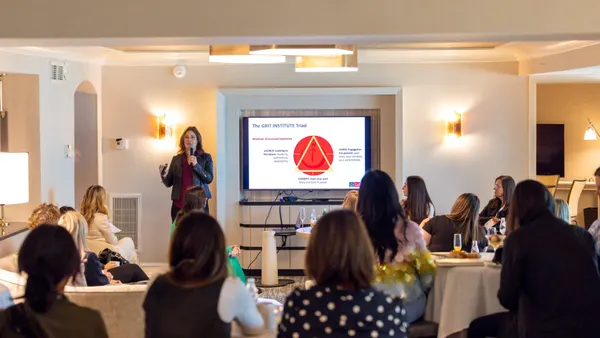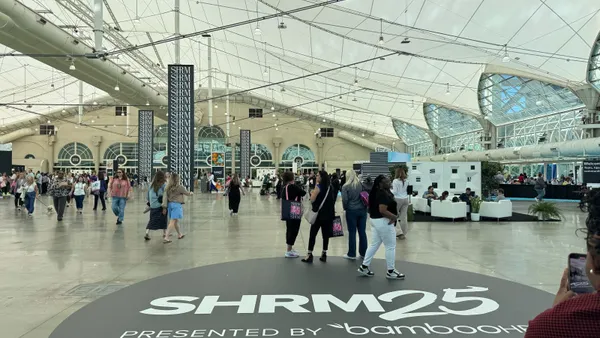Dive Brief:
- Employees who worked at standing desks were more engaged and less tired than those who sat during most of the workday, according to a new study published in the British Medical Journal, the BBC reported. Seventy-seven of the 146 mostly sedentary National Health Service (NHS) employees were given height-adjustable sit-stand desks, and the rest continued working at their standard desks. Not only did standing workers report being less tired and more engaged over time, but they also significantly lowered their overall sitting time.
- Workers who stood also reported having fewer musculoskeletal problems, being less anxious and experiencing a better quality of life, said the BBC. They did not, however, report any changes in cognitive function, job satisfaction or health-related absenteeism.
- The BBC cited other research results, which claimed that constant sitting can lead to cardiovascular problems and vulnerability to diseases. A 2015 British Heart Foundation study found that the average worker sat for nearly all nine hours of the workday.
Dive Insight:
More research may be required on the health benefits of working while standing versus sitting, but office architects and designers continue to focus on creating work spaces that foster collaboration and are environmentally friendly, physically comfortable and aesthetically pleasing.
Humanscale, office furniture designers, incorporates ergonomics in its designs to support employee health and wellbeing. In 2017, the company said innovative office design allows workers to alternate between sitting and standing to lessen fatigue. It also said office design is following function, or the needs of a workforce that's altering how work gets done, and that office design should be customizable to allow employees to work anywhere, digitized and environmentally conscious.
In designing or reconfiguring office space, employers will need to avoid a one-size-fits-all approach. Open-space layouts, which studies show are becoming more popular, may not work for employees who want and need quiet, private workspaces. Bright color schemes might inspire some workers, but distract others. Standing while working might have health benefits, but it may prove difficult (or impossible) for some. And many employees have said they believe they're more productive working at home than in the office. For employers considering a new work space, a variety of options may just be the recipe for success.












